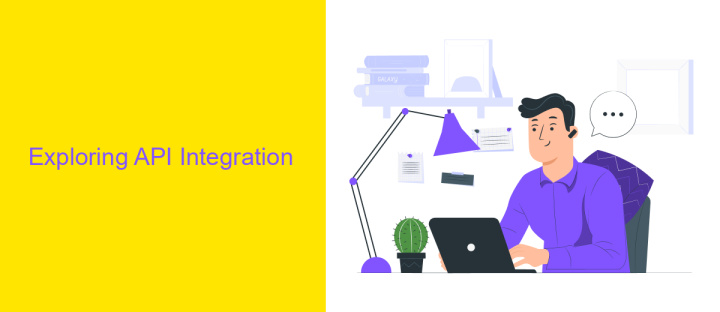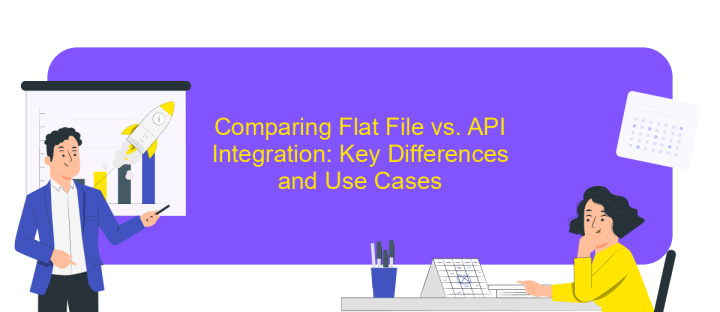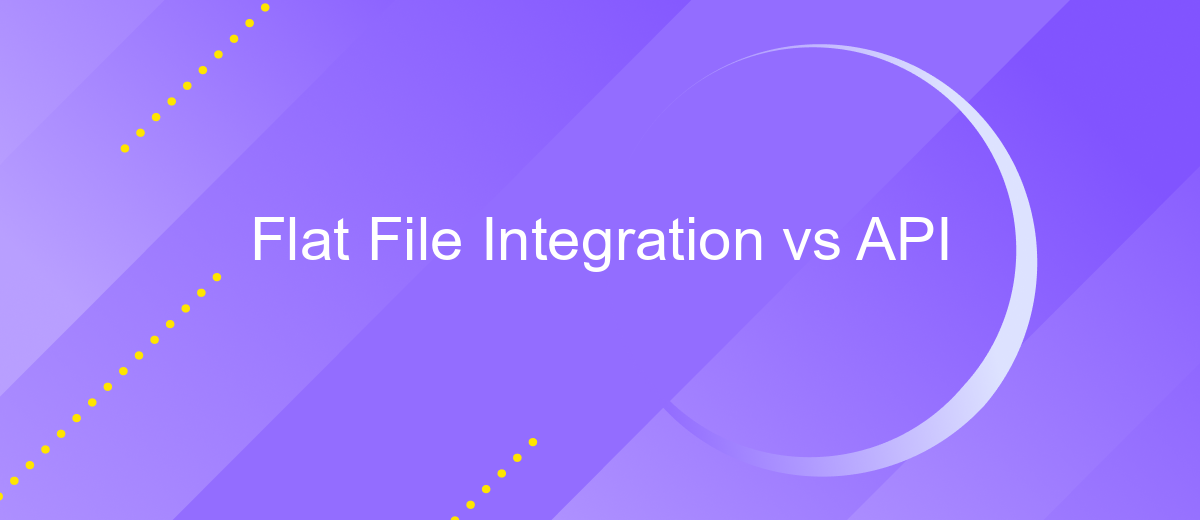Flat File Integration vs API
In today's rapidly evolving digital landscape, businesses are constantly seeking efficient ways to integrate their systems and streamline data exchange. Two popular methods stand out: flat file integration and API integration. While flat file integration offers simplicity and ease of use, API integration provides real-time data access and greater flexibility. This article explores the key differences, advantages, and drawbacks of each approach to help you make an informed decision.
Understanding Flat File Integration
Flat file integration is a method used to transfer data between systems by utilizing simple text files, often in formats like CSV or TSV. This approach is straightforward and does not require complex infrastructure, making it accessible for many businesses. Flat files are particularly useful for batch processing, where large volumes of data need to be exchanged at regular intervals. They are also platform-independent, ensuring compatibility across different systems.
- Simple to implement and understand without advanced technical skills.
- Platform-independent, ensuring broad compatibility.
- Ideal for batch processing and transferring large volumes of data.
- Cost-effective as it doesn't require advanced software or hardware.
Despite its simplicity, flat file integration has limitations, such as lack of real-time data exchange and potential for data errors during manual handling. However, for organizations with straightforward data exchange needs, it remains a viable option. As businesses grow and require more dynamic data interactions, they may consider integrating APIs for more robust and real-time data handling capabilities.
Exploring API Integration

API integration is a powerful method that enables different software systems to communicate seamlessly, exchanging data in real-time. Unlike flat file integration, which often requires manual data handling and periodic updates, APIs provide a dynamic and automated solution. This approach is especially beneficial for businesses that rely on up-to-date information to make informed decisions. APIs allow for a continuous flow of data, ensuring that systems remain synchronized without the need for manual intervention. This not only reduces the risk of errors but also enhances operational efficiency.
Setting up API integrations can be streamlined with tools like ApiX-Drive, which simplifies the process by offering an intuitive interface and pre-built connectors. ApiX-Drive allows users to connect various applications without extensive coding knowledge, making it accessible to a wider range of users. By leveraging such services, businesses can focus on their core operations while ensuring their systems are integrated effectively. This approach not only saves time but also ensures that the data exchange is secure and reliable, providing a robust foundation for digital transformation efforts.
Comparing Flat File vs. API Integration: Key Differences and Use Cases

Flat file integration and API integration serve as two distinct methods for data exchange between systems. Understanding their differences is crucial for determining the best approach for your needs. Flat file integration involves the transfer of data in a structured file format, such as CSV or XML, which is then imported into a system. API integration, on the other hand, uses application programming interfaces to enable real-time data exchange between applications.
- Data Exchange Speed: Flat files are typically processed in batches, leading to potential delays, whereas APIs facilitate real-time data transfer.
- Complexity: Flat file integration is simpler but may require more manual intervention, while APIs offer automated and dynamic interactions.
- Scalability: APIs are more scalable and flexible, supporting a wider range of operations compared to static flat files.
Flat file integration is ideal for scenarios where data exchange is infrequent or involves large data volumes processed in batches, such as data warehousing. API integration is more suitable for environments requiring real-time data access, like e-commerce platforms or cloud services. Choosing between the two depends on your specific operational needs and technical capabilities.
Advantages and Disadvantages of Each Method

When considering data integration methods, both flat file integration and API offer distinct advantages and disadvantages. Flat file integration is often simpler and more cost-effective, making it appealing for organizations with limited technical resources. It allows for batch processing, which can be beneficial when handling large volumes of data at once.
On the other hand, APIs provide real-time data exchange, which is crucial for applications requiring up-to-date information. They offer more flexibility and scalability, as they can easily integrate with various systems and adapt to changing needs. However, implementing APIs can be more complex and require greater technical expertise.
- Flat File Integration: Simplicity, cost-effectiveness, suitable for batch processing.
- API: Real-time data exchange, flexibility, scalability, requires technical expertise.
Ultimately, the choice between flat file integration and API depends on the specific needs of an organization. For those prioritizing simplicity and cost, flat file integration may be preferable. However, for businesses that require real-time data and have the technical capacity, APIs offer a more dynamic and future-proof solution.
- Automate the work of an online store or landing
- Empower through integration
- Don't spend money on programmers and integrators
- Save time by automating routine tasks
Choosing the Right Approach for Your Needs
When deciding between flat file integration and API, it's crucial to assess your organization's specific needs and resources. Flat file integration is often simpler and can be ideal for businesses with limited technical expertise or those dealing with legacy systems. It allows for batch processing, which can be beneficial for handling large volumes of data at once. However, it might not be suitable for scenarios requiring real-time data updates or complex data interactions.
On the other hand, APIs offer more flexibility and are well-suited for real-time data exchange and dynamic applications. They enable seamless connectivity between various platforms and services, making them a preferred choice for modern, agile businesses. For organizations looking to streamline their integration processes, services like ApiX-Drive can be invaluable. ApiX-Drive provides a user-friendly platform to automate workflows and connect different systems without extensive coding knowledge. Ultimately, the right approach depends on your technical capabilities, data requirements, and long-term business goals.
FAQ
What is the difference between Flat File Integration and API Integration?
When should I use Flat File Integration over API Integration?
What are the advantages of API Integration?
How can I automate Flat File Integration processes?
What should I consider when choosing between Flat File and API Integration?
Time is the most valuable resource for business today. Almost half of it is wasted on routine tasks. Your employees are constantly forced to perform monotonous tasks that are difficult to classify as important and specialized. You can leave everything as it is by hiring additional employees, or you can automate most of the business processes using the ApiX-Drive online connector to get rid of unnecessary time and money expenses once and for all. The choice is yours!


